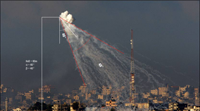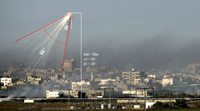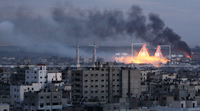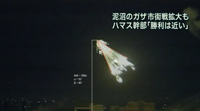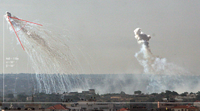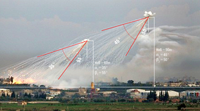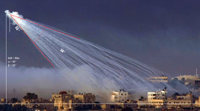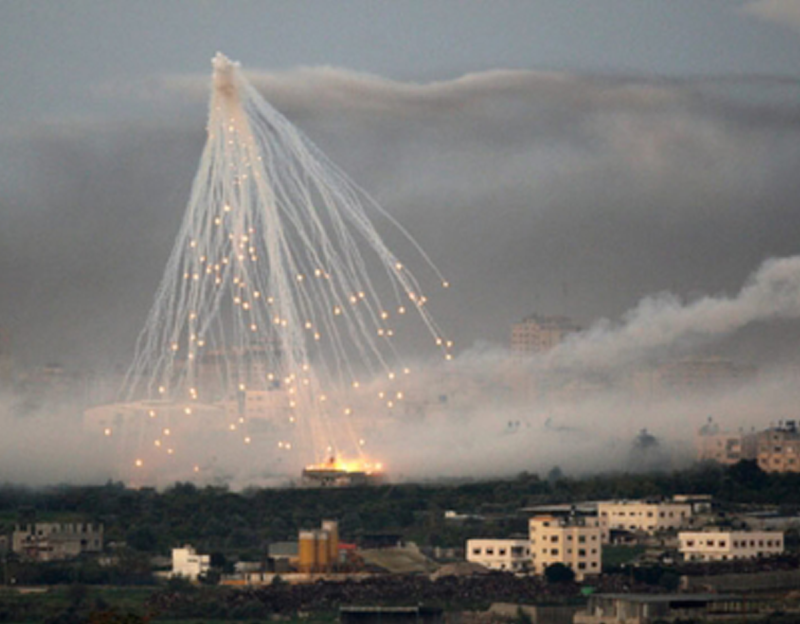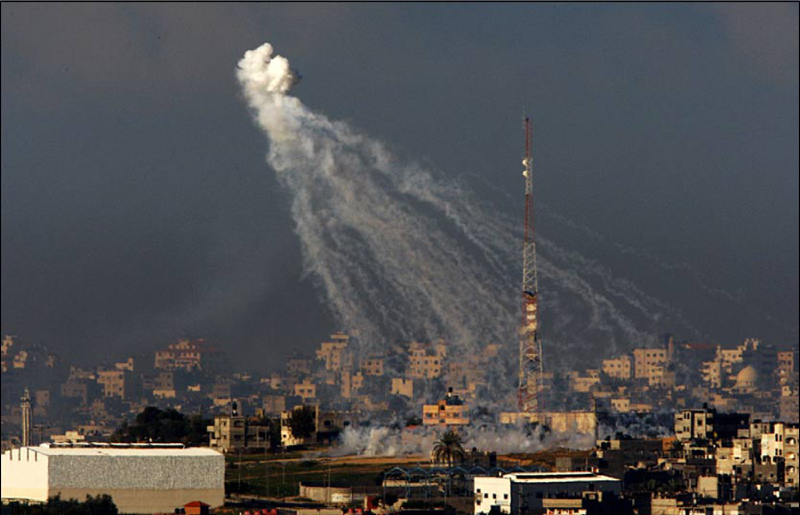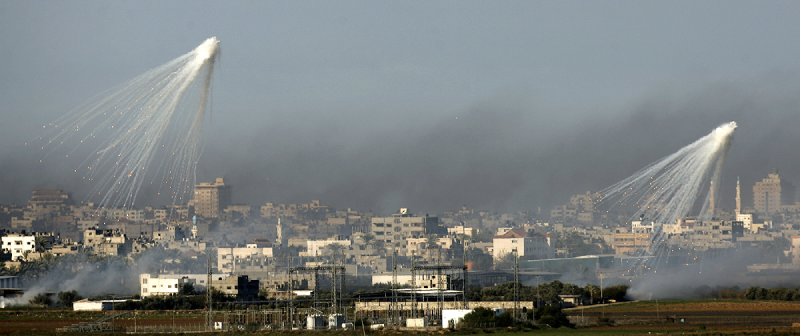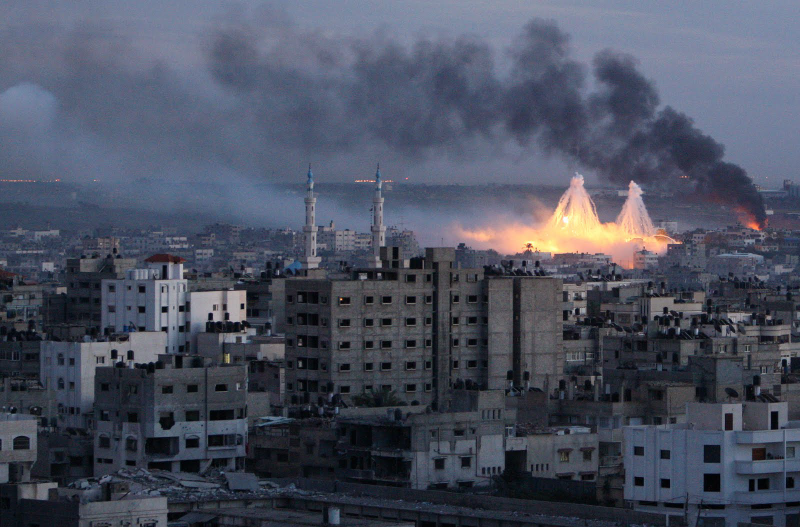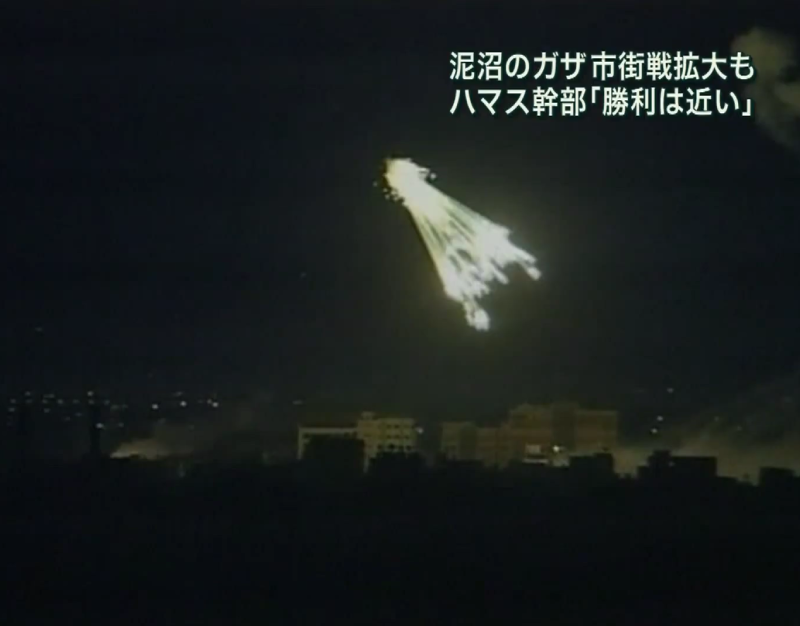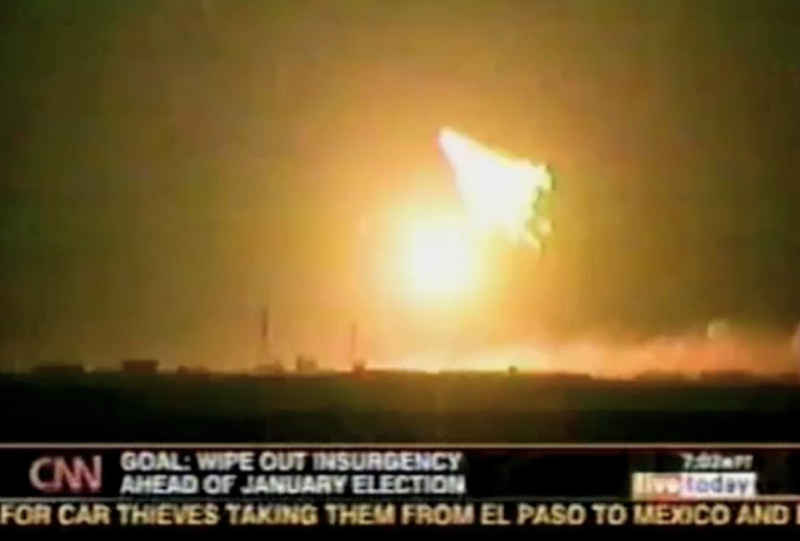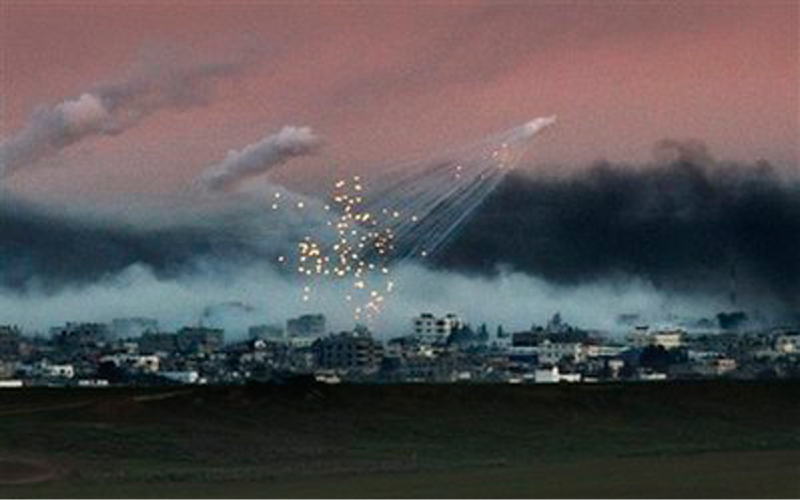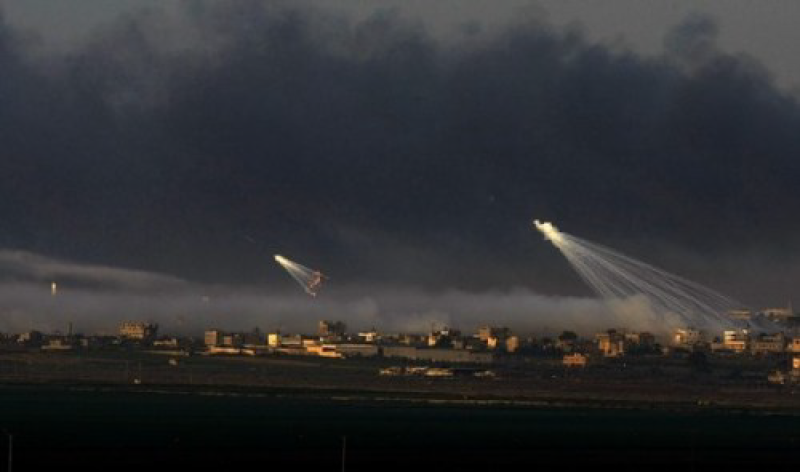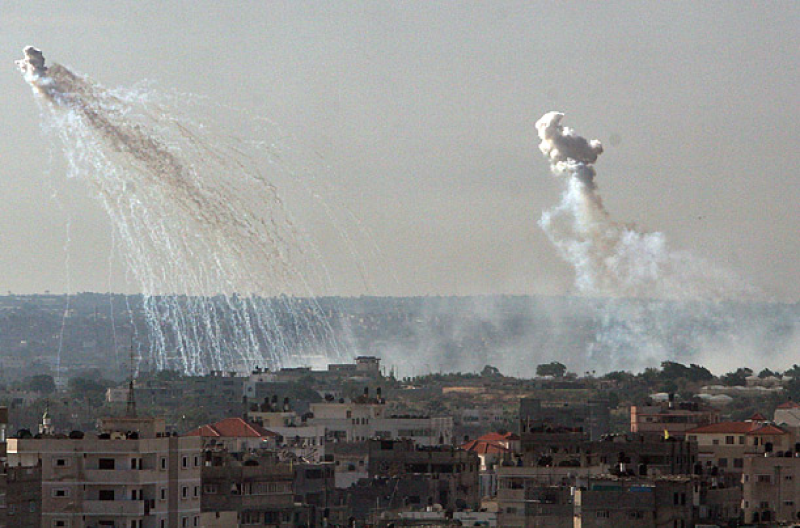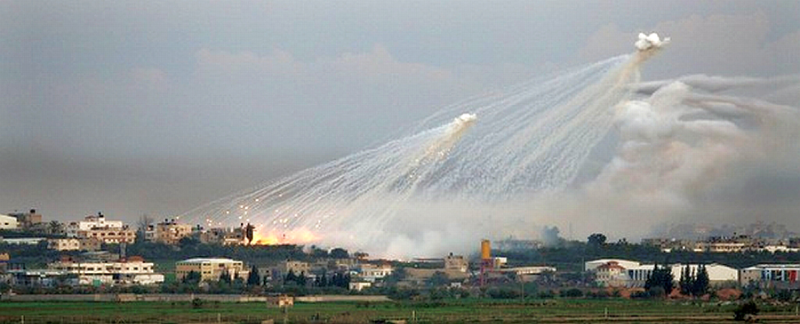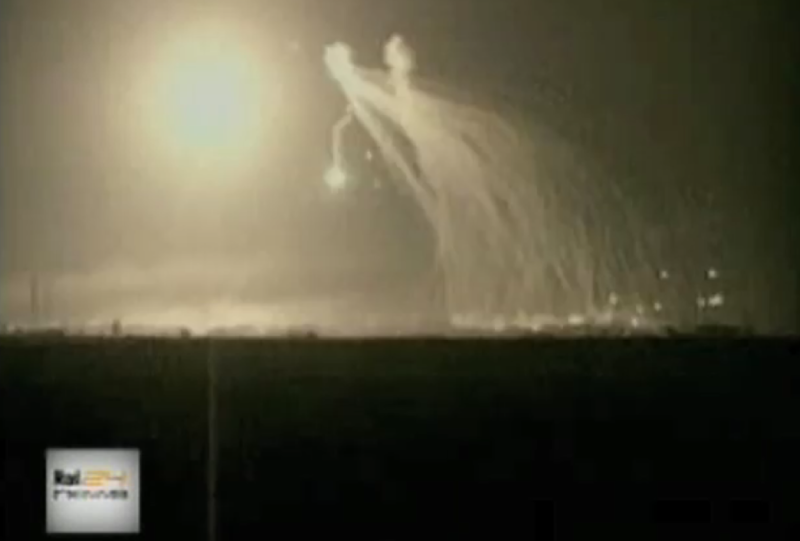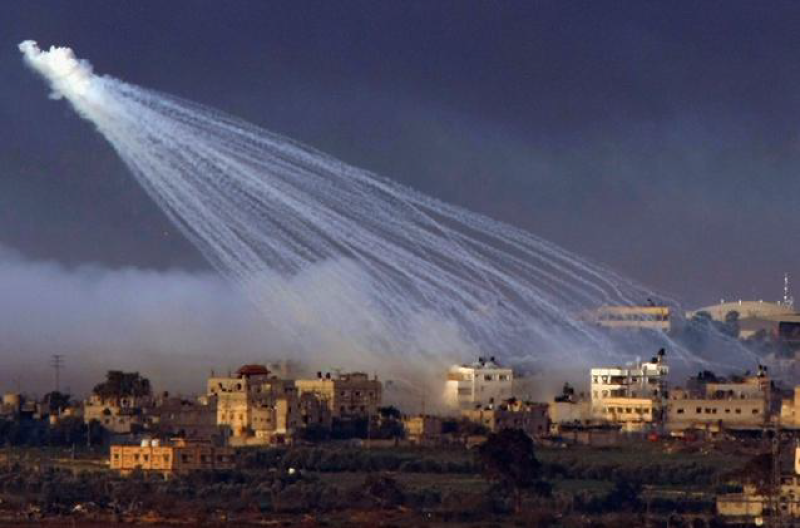Post-burst characteristics of the M825 projectile are documented here and used throughout the report to model the dispersal of the 116 WP wedges.
The point of burst and the subsequent trajectories of the wedges are both clearly identifiable in images of an airburst WP round, respectively as a dense cloud and as thin trails of white smoke in the air. The height of burst can therefore be inferred and approximated using the vertical measurement of buildings identifiable in the image as references. An indication of the projectile's initial trajectory is established by tracking the smoke trails of the wedges as they fall.
The values of burst height and trajectory angles derived from measurements conducted on these images are set against the reference values to be found in the relevant military documents13. Together they establish a range of values used in the parametric model. The various M825 WP rounds analyzed are classified into two types, according to the distinction mentioned in artillery field manuals between low-angle fire (below 45°) and high-angle fire (above 45°).
Each of the images analyzed in the following set is marked with indicative values for three variables: Height of Burst (HoB, in multiple of 10m), Inclination (β, in multiple of 5°), and Opening Angle of the cone of dispersion of wedges (ɑ, in multiple of 5°).
It should be noted that the Opening Angles and Inclinations documented in all available photographs may differ slightly from the actual Angles of the round considered because of the orientation of the line of fire in relation to the picture plane of the image.

